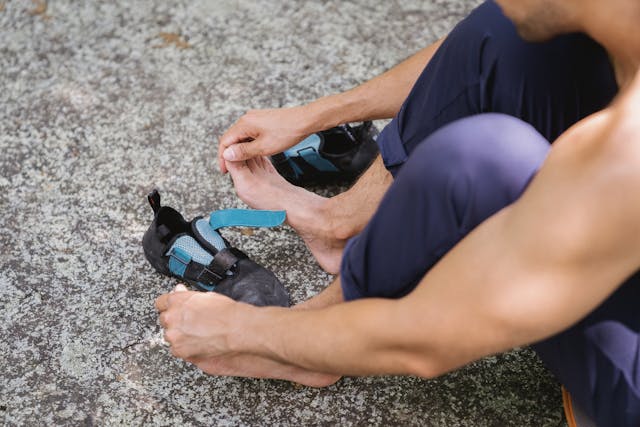Finger/Toe/Foot Pain
Rheumatoid arthritis, degenerative joint disease, bone spurs, osteoarthritis, tenosynovitis, gout, plantar fasciitis metatarsalgia, hallux valgus, hallux rigidus, bunions, neuromas
 Finger and toe injuries may be due to systemic inflammation, such as with rheumatoid arthritis (usually observed as swelling in the middle joints of the fingers, the MIP joints) or gout and thus patients should address these conditions systemically particularly by addressing food sensitivities and allergies such those to dairy, wheat, and soy products. Of these three most common allergies, dairy products (particularly processed, homogenized, or pasteurized cow cheese) are the most significant contributors for joint pain due to rheumatoid arthritis. Along with addressing these food allergies, patients can often gain relief by fasting for a few days and following a low residue (low inflammation) diet overall. Increasing dietary omega 3 such as from grass-fed bison, ultrapure fish oils, cod liver oil along with seeds (flax and hemp) or nuts (walnuts) can be very beneficial. Proteolytic enzymes, taken 3-5 pills on an empty stomach (2 hours after a meal) can often significantly reduce inflammation and pain from rheumatoid arthritis (RA). Finally, for persistent conditions, testing for and treating heavy metal toxicity or other toxins (aka mold, pesticides, plastics, petrochemicals) can be super informative as gaining a foothold over the pain from rheumatoid arthritis (RA), especially before resorting to pharmaceutical medications. Long term medications may have some place once a patient has looked at dietary influences, toxins, and natural remedies but these medications must be used carefully as all of them can have long-term side effects. On that note, Dr. Hughes has observed significant benefits in patients who use 2x dosing of Rapamycin as well as daily low dose naltrexone (3 to 12mg dosing).
Finger and toe injuries may be due to systemic inflammation, such as with rheumatoid arthritis (usually observed as swelling in the middle joints of the fingers, the MIP joints) or gout and thus patients should address these conditions systemically particularly by addressing food sensitivities and allergies such those to dairy, wheat, and soy products. Of these three most common allergies, dairy products (particularly processed, homogenized, or pasteurized cow cheese) are the most significant contributors for joint pain due to rheumatoid arthritis. Along with addressing these food allergies, patients can often gain relief by fasting for a few days and following a low residue (low inflammation) diet overall. Increasing dietary omega 3 such as from grass-fed bison, ultrapure fish oils, cod liver oil along with seeds (flax and hemp) or nuts (walnuts) can be very beneficial. Proteolytic enzymes, taken 3-5 pills on an empty stomach (2 hours after a meal) can often significantly reduce inflammation and pain from rheumatoid arthritis (RA). Finally, for persistent conditions, testing for and treating heavy metal toxicity or other toxins (aka mold, pesticides, plastics, petrochemicals) can be super informative as gaining a foothold over the pain from rheumatoid arthritis (RA), especially before resorting to pharmaceutical medications. Long term medications may have some place once a patient has looked at dietary influences, toxins, and natural remedies but these medications must be used carefully as all of them can have long-term side effects. On that note, Dr. Hughes has observed significant benefits in patients who use 2x dosing of Rapamycin as well as daily low dose naltrexone (3 to 12mg dosing).
Gout or gouty arthritis can be unduly debilitating for short or long time periods. Often affecting the big toe or ankle, gouty arthritis is commonly the result of an acidic diet with little to no vegetables as well as dehydration which may be caused by excess alcohol consumption. Patients with gout often are prescribed medications like Colchicine in the short-term or Allopurinol (or Uloric) for long-term relief. None of these medications are great long-term but may be necessary if patients are unwilling to change their dietary or lifestyle habits. Natural remedies that may help some patients include black cherry juice (from https://cheribundi.com/), ½ tsp of baking soda in water at bedtime (for alkalization), greens powder (wheatgrass and barley grass powder), or simply good hydration.
For patients with other conditions of finger or toe Pain due to degenerative joint disease, bone spurs, osteoarthritis, tenosynovitis, hallux valgus, hallux rigidus, bunions, or neuromas), these conditions can often be addressed with PRP (as bioactive plasma) or PBSCs (Peripheral Blood Stem Cells). Using carefully guided placement, the osteopathic physicians at Aspen Integrative Medicine, inject degenerative conditions such as osteoarthritis (usually seen as swelling in first and last joints of the fingers, the PIP and DIP joints) using a small needle. Patients who have bone spurs or bone growths (such as with bunions) can also be injected followed by gentle curettage (scaping) of the bone spur or growth away from the healthy bone surface often followed by injection of PRP (as bioactive plasma) and phosphatidylcholine. These curettage procedures do take an expert level of skill by the osteopathic practitioner and create extended swelling but can save a patient’s use of their hands and also free him or her from dependence on toxic NSAIDs (such as Meloxicam, Ibuprofen, or steroids) long-term. Finally, patients with calcific tenosynovitis in the extensor or flexor tenors may also find relief with PRP (as bioactive plasma) injections. Finally, PRP (as bioactive plasma) injections can also help with neuromas, plantar fasciitis, metatarsalgia, hallux rigidus and hallux valgus but only in conjunction with wider shoes with less heel (ideally less than 2mm or zero drop shoes) along with more barefoot walking and foot exercises. Patients with plantar fasciitis can benefit from orthotics for short periods of time as well as regular use of a night splint for at least 2-3 months (such as the Alpha Night splint found online). Finally, use of shockwave therapy to address plantar fasciitis post-injection and stretching exercises before going to bed and upon arising are also key modalities for healing from this painful foot condition.